MidCoast Maine is full of small, random little towns that you’ll love to pop into, and Georgetown is one of those. A tiny fishing village, Georgetown is a town located in Sagadahoc County. near Bath and across the Sheepscot River from Boothbay Harbor. The Kennebec River is on the other side. . In winter the icefloes on the Kennebec and Sheepscot Rivers make the short journey to Georgetown and Five Islands a cool, mysterious day trip.
For anyone looking to just wander MidCoast and see what you’ll find, I think Georgetown is a great spot to add to your travel plans. From birdwatching to summertime lobster rolls, the vibe and the sights are truly Maine. If you have any questions about exploring MidCoast or need recommendations for things to do or where to stay, please leave a comment or send us a note. We’re always happy to share more!
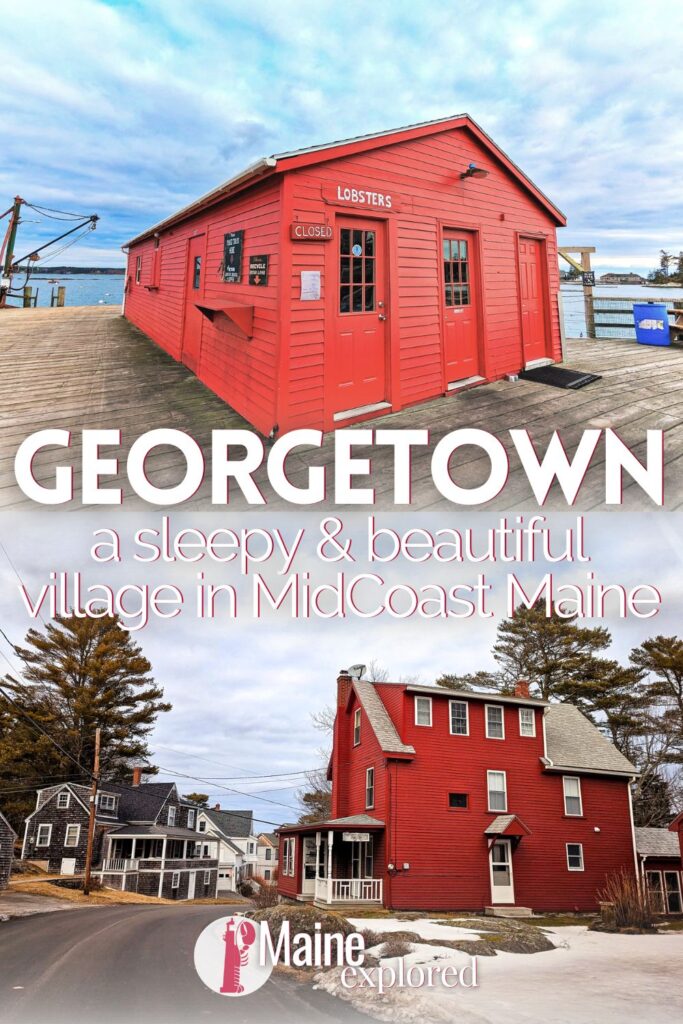
Why Visit Georgetown, Maine?
I love all the little coastal settlements up and down Maine’s shores, and Georgetown is a wonderful little one. True, you’re not coming here for epic adventures or world-renown cuisine, but it’s quiet and the nature is beautiful. As you’ll see in our list of things to do, Georgetown and Five Islands (a part of the town) are a haven for Maine wildlife and you get a bit of the maritime mood here too. It’s worth visiting if for no other reason, than that most people don’t know it exists. It’s just pleasant.
History of Georgetown, Maine
The first European settlement in Georgetown was established in 1607 by the English explorer George Popham. However, the settlement was abandoned after just one year due to harsh weather conditions and a lack of resources. The area was originally inhabited by the Abenaki and Wabanaki peoples, but today, it’s a quiet place to visit for a day. Georgetown, Maine has become a sleepy, beautiful stop if you’re exploring the small fishing villages of MidCoast Maine.
The town was resettled and then officially incorporated in 1716 and named after King George I of England (nope, not the one during the American Revolution). During the 18th century, Georgetown was a thriving center of shipbuilding, fishing, and farming. It was also a popular spot for summer homes for wealthy families from Boston and New York.
In the 19th century, the town’s economy shifted towards lumbering and ice harvesting. Large quantities of timber were harvested from the surrounding forests and floated down the rivers to sawmills in nearby towns. Georgetown’s ice industry was also significant, with ice harvested from the local rivers and shipped to cities along the East Coast for use in refrigeration.
Georgetown Historical Society: This organization preserves and promotes the history of Georgetown through exhibits, educational programs, and events. Visitors can explore the society’s collection of artifacts and learn about the town’s history.
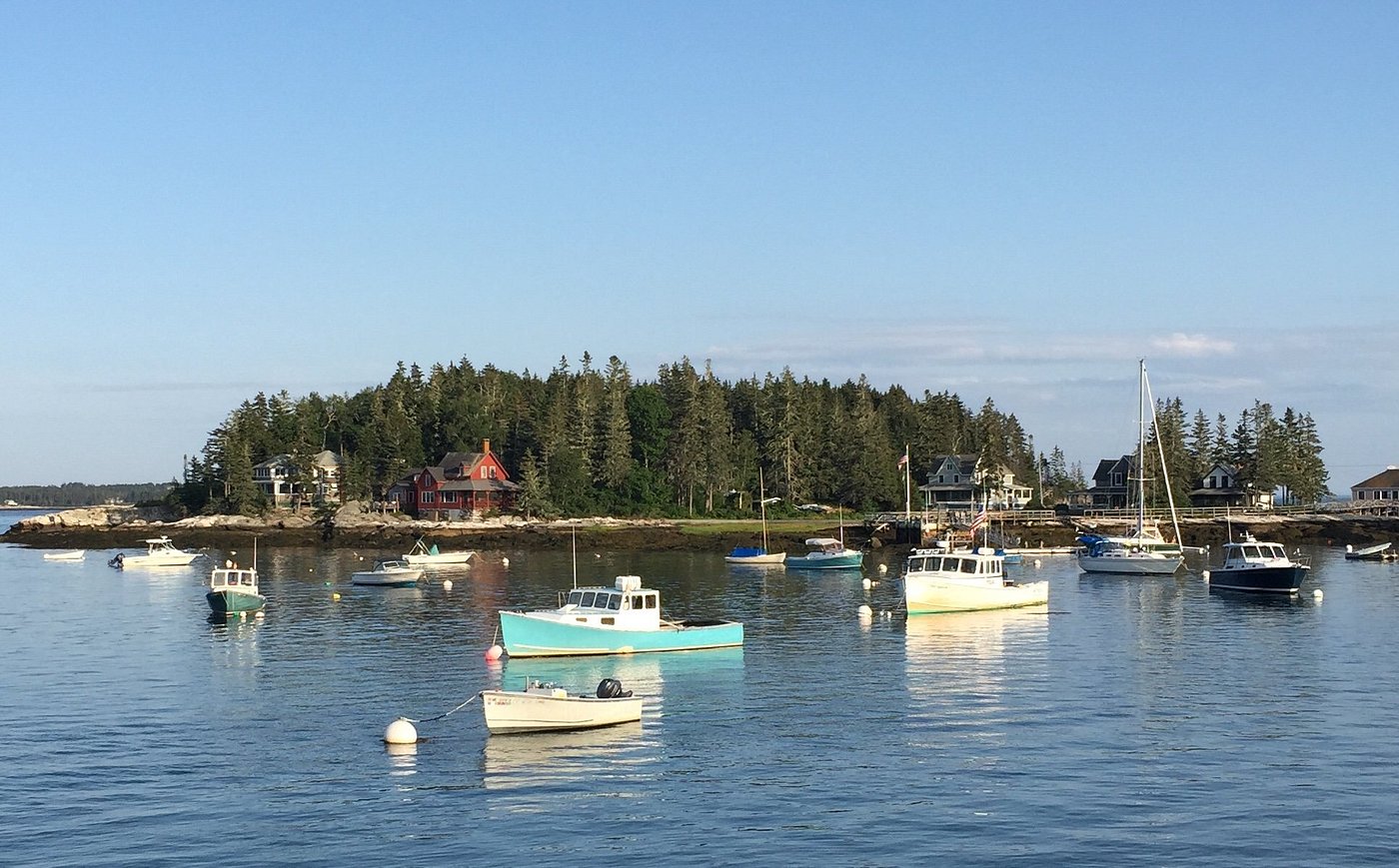
What is the history of Five Islands, Maine?
Five Islands is a small village located in Georgetown, Maine, situated on the banks of the Sheepscot River. The village’s name is said to have originated from the five small islands located in the Sheepscot River that were used as fishing grounds by local fishermen. Over the years the ship building businesses have all but disappeared and not it’s a fishing harbor with a few local lobstermen who moor here.
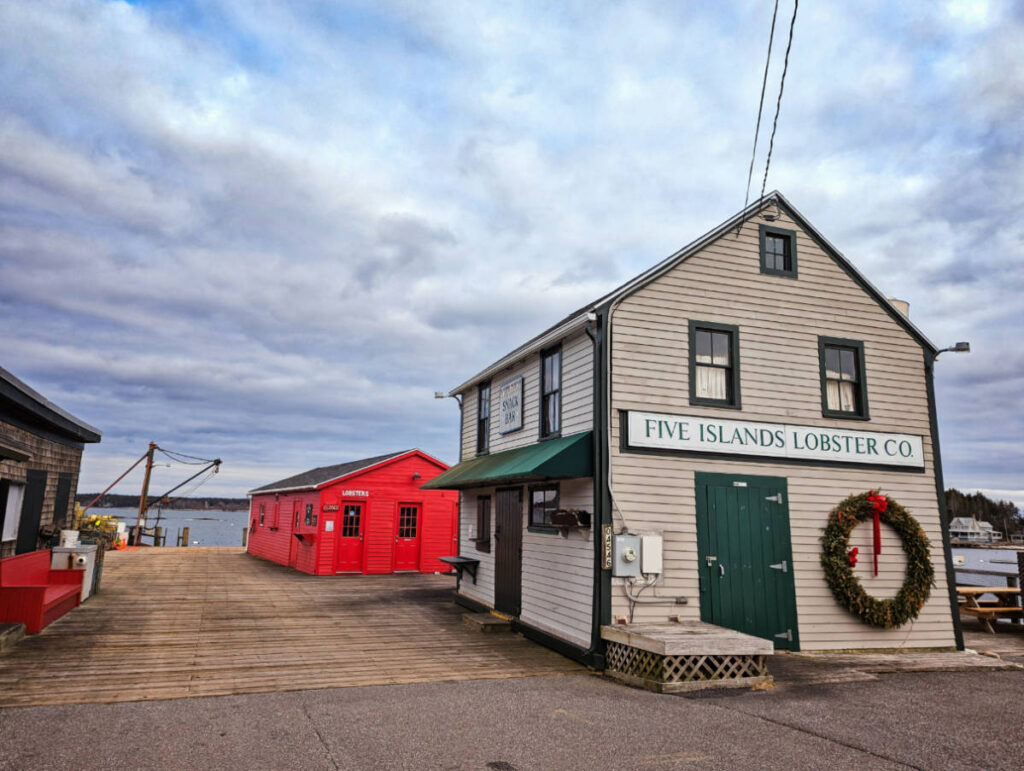
Things to do in Georgetown, Maine
Yes, it’s quiet here but it’s beautiful and we’ve got some great things to do to enjoy the area. Georgetown, Maine offers just a few activities for visitors, mainly exploring historic lighthouses and enjoying the natural beauty of the area. Here are the top things to do in Georgetown, most of which are best in summertime.
Reid State Park and Beach
Visiting Reid State Park is great in both summer and winter, although the: This popular beach destination offers miles of sandy shoreline and rocky coastline for visitors to explore. Reid State Park is also home to several hiking trails, picnic areas, and a playground. Mile Beach is one of the best beaches in MidCoast Maine and can see a few hundred visitors over summer weekends when it’s warm and sunny. Mile Beach was actually voted as the Best Surfing Beach in New England in 2015. Check current notices for Reid State Park here.
Lighthouses near Georgetown, Maine
There are three lighthouses in and around Georgetown: Squirrel Point, Pond Island, Seguin Island and the Cuckolds Light. You can’t visit all of them, but if you head out on a boat you can see them all. One of our favorite lighthouses is the Squirrel Point Light located on the Kennebec River, just to the west of Georgetown. Since it’s difficult to visit the Seguin Island Light or Pond Island Light, if you want to visit a lighthouse when visiting Georgetown and Five Islands, Squirrel Point is your historic spot to seek out! It’s a river lighthouse that you actually have to hike to. It’s a nice hike through the woods, but if it’s a snow-melt day, it can be muddy.
The other three lighthouses can be seen on boat tours from Boothbay Harbor or Phillipsburg. Something neat about the Seguin Island Lighthouse is that it is the second oldest lighthouse in Maine and was actually commissioned by George Washington. It is also the highest lighthouse in Maine. Visitors can take a ferry (charter boat) to the island and hike around the area. The ferry leaves from Fort Popham and is operated by Fish ‘n Trips.
Check out more river lighthouses in Maine here!
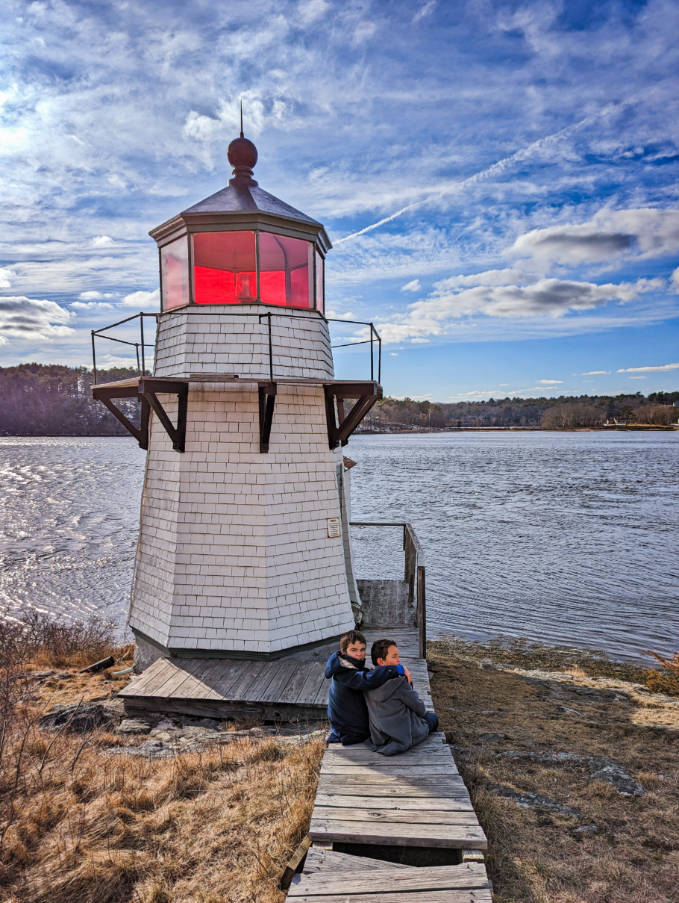
Wildlife Preserves and Birdwatching in Georgetown
Georgetown is home to several wildlife preserves, including the Josephine Newman Audubon Wildlife Sanctuary and the Sewall Pond Preserve. These areas offer opportunities for hiking, fishing, and birdwatching, with a variety of species to observe, including bald eagles, ospreys, and great blue herons. This area is one of the best for observing Maine wildlife, especially in winter months. If you’re lucky, in recent years there have been a few Steller sea eagles that have flown across Canada and wintered here. You’ll know if that’s happening during your visit because ALL the birders come out.
The Ipcar Nature Preserve is another good birding spot. This is located at Five Islands and has several trails to take you through the woods and to spots along the Sheepscot River.
Visit the Coastal Maine Botanical Gardens:
I love the Coastal Maine Botanical Gardens. I know, it’s not located IN Georgetown, but it’s easy to drive over to Boothbay Harbor from here. This 270-acre botanical garden features a wide variety of plants and flowers native to the Maine coast. Visitors can stroll through the gardens, enjoy the waterfront view, and participate in educational programs and events. Yes, this is about an hour away, but if you’re just out for a drive and want a substantial activity, the Coastal Maine Botanical Gardens are a great option!
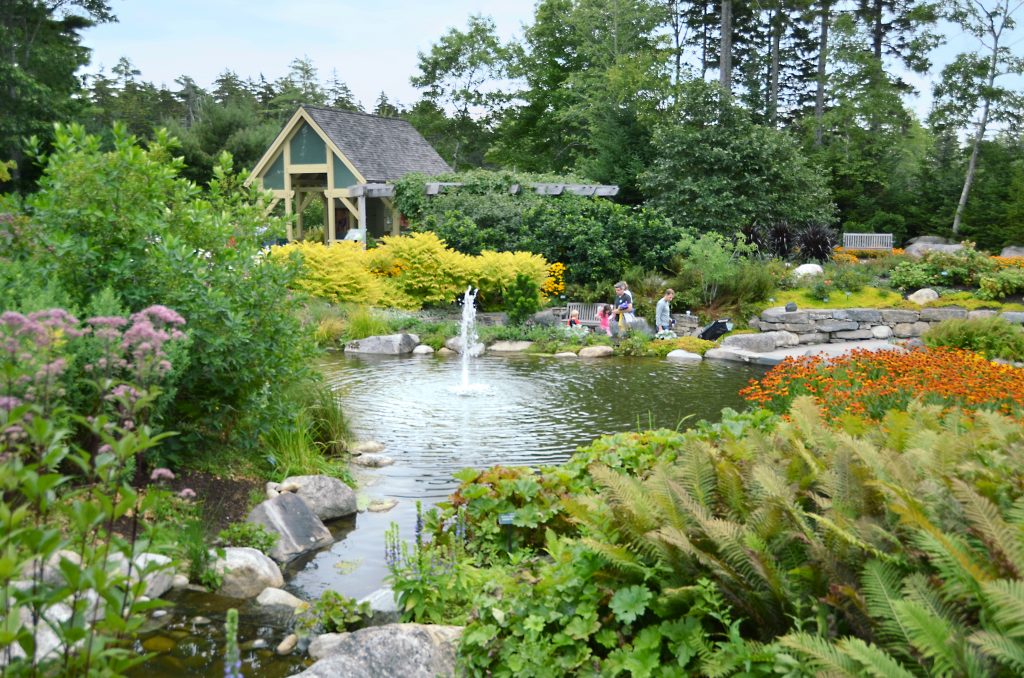
In addition to these fun things to do, Georgetown is also known for its lobster fishing industry. Visitors can enjoy fresh seafood at the Five Islands Lobster Co or take a lobster boat tour to learn more about the local fishing traditions. Overall, Georgetown offers a unique blend of history, nature, and a little bit of culture that’s really characteristic of MidCoast Maine.
Visiting Five Islands
Five Islands is really just a small community with a nice dock and lobster shack these days. During the 19th century, Five Islands continued to thrive as a fishing and shipbuilding center, with large quantities of fish, lumber, and ice harvested from the surrounding area. The village was also a popular destination for summer tourists, who came to enjoy the scenic beauty of the area.
In the early 20th century, Five Islands experienced a decline in industry and population, as many residents moved to larger towns and cities for work. However, the village continued to attract visitors, particularly those interested in outdoor recreation and birding.
Today, Five Islands is known for its cute waterfront/riverfront, scenic hiking trails (pay attention to private property signage), and fresh seafood. Visitors can explore the village’s historic buildings, including the Five Islands Baptist Church and the Five Islands Lobster Company, a local lobster shack that has been serving seafood for over 75 years.
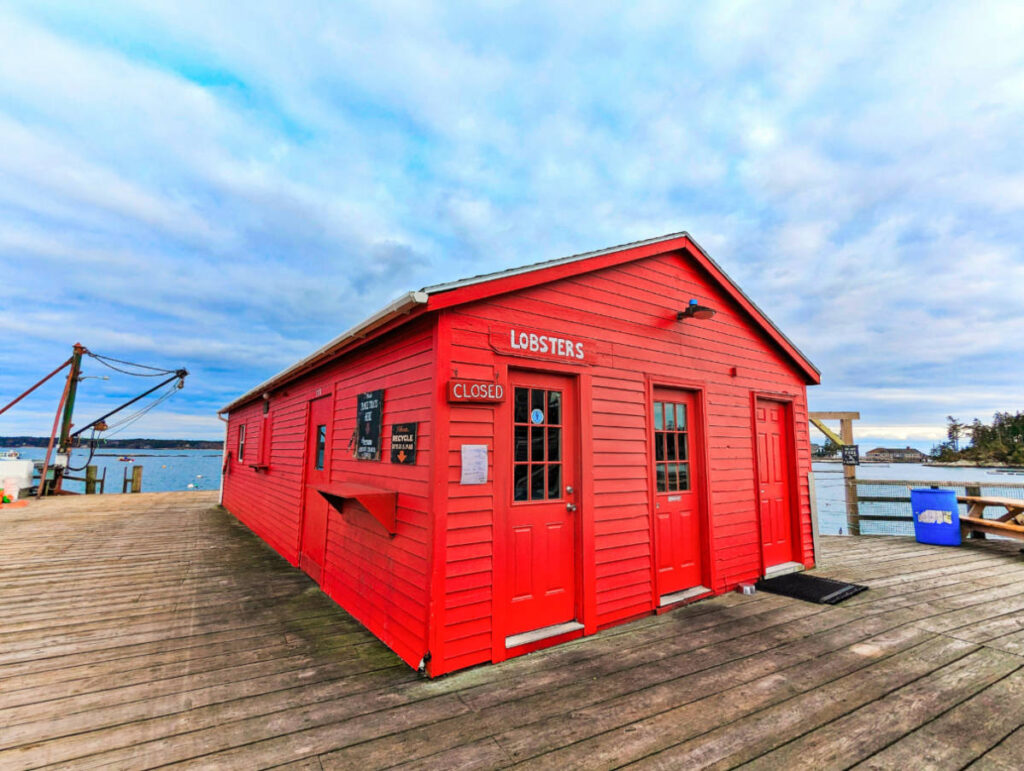
You’ll enjoy visiting Georgetown and Five Islands, Maine. It’s cute and remote. It’s quiet and a great way to step back in time to… to before tourists were everywhere. If you have any questions about visiting the area, exploring MidCoast Maine or need recommendations for where to stay, please leave a comment or send us a note. We’re always happy to share more.
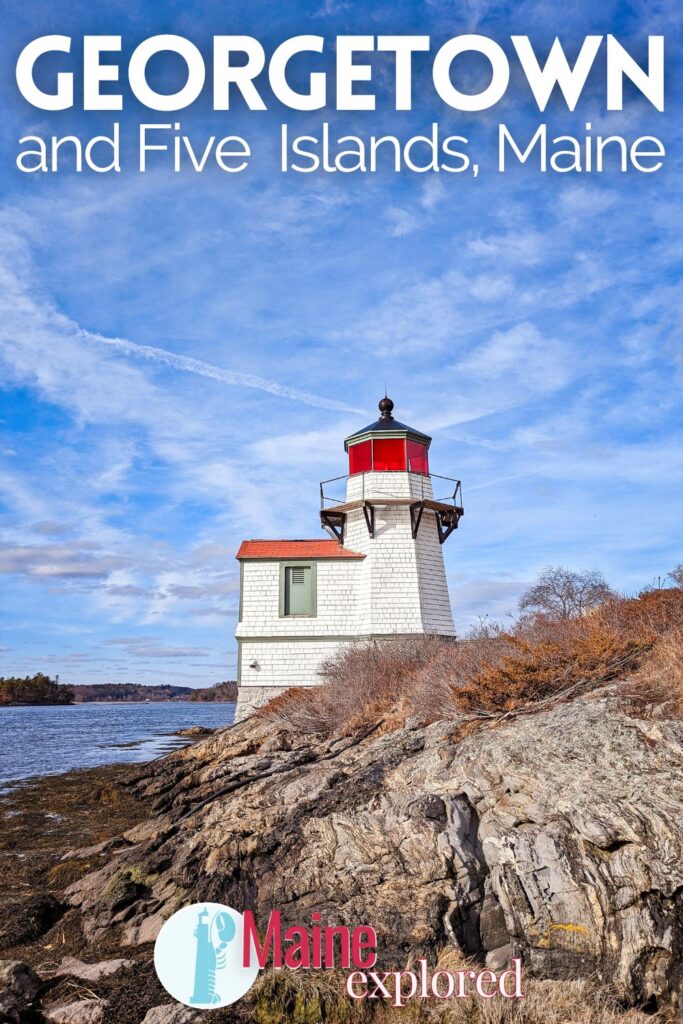



Pingback: Wildlife in Maine: Spotting Moose, Puffins and More